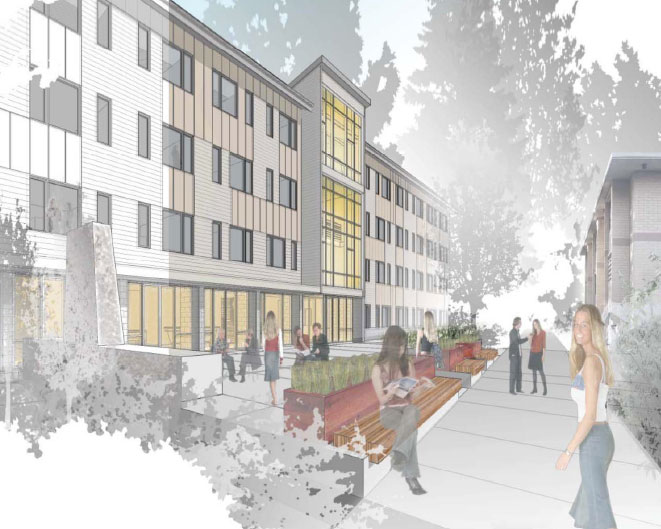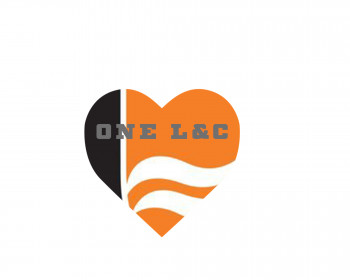Q&A with Dean Limas on the new LEED platinum-rated residence hall
Open gallery

Editor’s note: Since this article first appeared, the rating for the residence hall has been changed to LEED gold.
At its October meeting, the Lewis & Clark Board of Trustees approved the construction of a LEED platinum-rated residence hall—one of the first of its kind in the nation.
The Source sat down with Dean of Students Celestino Limas to find out more.
Why is the College building a new residence hall during such financially challenging times?
Right now with low interest rates and low construction costs, we have a particularly attractive window of opportunity to affordably build an additional residence hall.
Funding for the new hall, which is estimated to cost approximately $11.5 million, will be included with the refinancing of the College’s debt in new bonds to be issued in 2011. The new hall will pay for itself entirely from the additional room and board revenue it generates. Additionally, it will help contribute toward our auxiliary income and can help expedite our ability to pay down our debt load. And because the venture is designed to be self-sufficient it will not impact our bond rating.
Why is the LEED platinum rating significant?
It is significant because for many years now we have made strides in establishing ourselves as an institution committed to sustainability.
Since 1989, Lewis & Clark has shrunk its carbon footprint by conducting a series of studies on its energy use practices. Since then, the College has achieved substantial cost savings by partnering with regional utility and engineering companies and installing a microturbine and solar panels.
Above that, our students and faculty work hard to ensure that Lewis & Clark’s sustainability efforts are grounded in current research. From the efforts of student groups like SEED and SAAB, to the accomplishments of those who are devoted to service work overseas, we realize that sustainability is about much more than greening our campus.
Building a certified LEED platinum facility will be another demonstration to the world that Lewis & Clark College is steadfast in its strive toward sustainable practices.
Who is going to design and build the new residence hall and when will construction begin?
Last month, an evaluation committee with student, staff, and trustee representatives invited five design/build teams to submit proposals for a new residence hall.
Walsh Construction and Mahlum Architects was selected due to their thorough understanding of student housing, their exciting design, and their competitive price. The Walsh/Mahlum team will present a final design and budget to the Board of Trustees at its February 18 meeting.
Until then, the campus community is invited to attend any of the following Walsh/Muhlum open design sessions to be held in Templeton Campus Center, Thayer:
Wednesday, November 3, 9 a.m. to noon
Eco-Charrette—Designing for LEED Platinum
Thursday, November 4, 9 a.m. to 3 p.m.
Interactive Design Charrette open to the community for questions and feedback
Thursday, November 4, 3:30 to 5 p.m.
Informal presentation—snapshot of work so far
We hope to break ground by summer 2011 and complete the project by fall 2012.
Where will the new residence hall be located?
The new hall will be located in between Hartzfeld Residence Hall and Facilities Services.
How many students will the new residence hall accommodate?
Approximately 170 students.
Who will be eligible to live there?
Seniors and juniors will have the opportunity to live in the new residence hall; if we are unable to fill it with CAS students, we will offer law and graduate students the opportunity to have a floor in the new hall.
Does the College plan to establish a three-year residency requirement?
No—this was an idea from early in the summer, but one that needed to be vetted with students this fall. After having many conversations with them, we learned that students were very resistant to a three-year requirement for many reasons and offered alternatives to ensure we could fill the building without changing our current residency requirement. I am truly grateful to students for their willingness to talk with us about this issue and also present solutions so that everyone feels confident in the project.
How will the College compete with the sometimes-low price of off-campus housing and entice upperclass students to live on campus?
This is something we will be much more aggressive with, as in the past we have not made a conscious effort to compete with off-campus housing when upperclass students select their housing. For example, we have never marketed the fact that that a comparison of our room rate and off-campus rent should take into account that our room rate includes electricity, gas, water, heat, trash, Internet, security, and other costs. We can and will do a better job of marketing the financial benefits of living on campus along with the convenience and community benefits that are immeasurable.
Will the new residents be allowed to park cars on campus, and, if so, are there plans to increase the number of parking spaces available at Lewis & Clark?
We will actually not lose any parking spaces with this new project and yes, students living in this new hall will be able to park cars on campus. We are also pursuing the acquisition of two additional U-Car Share vehicles specifically for residents of the building, which would be parked within footsteps of the front door. This would create a very attractive alternative for students and if it succeeds, could genuinely change how we use our U-Car Share vehicles.
More The Source Stories
email source@lclark.edu

